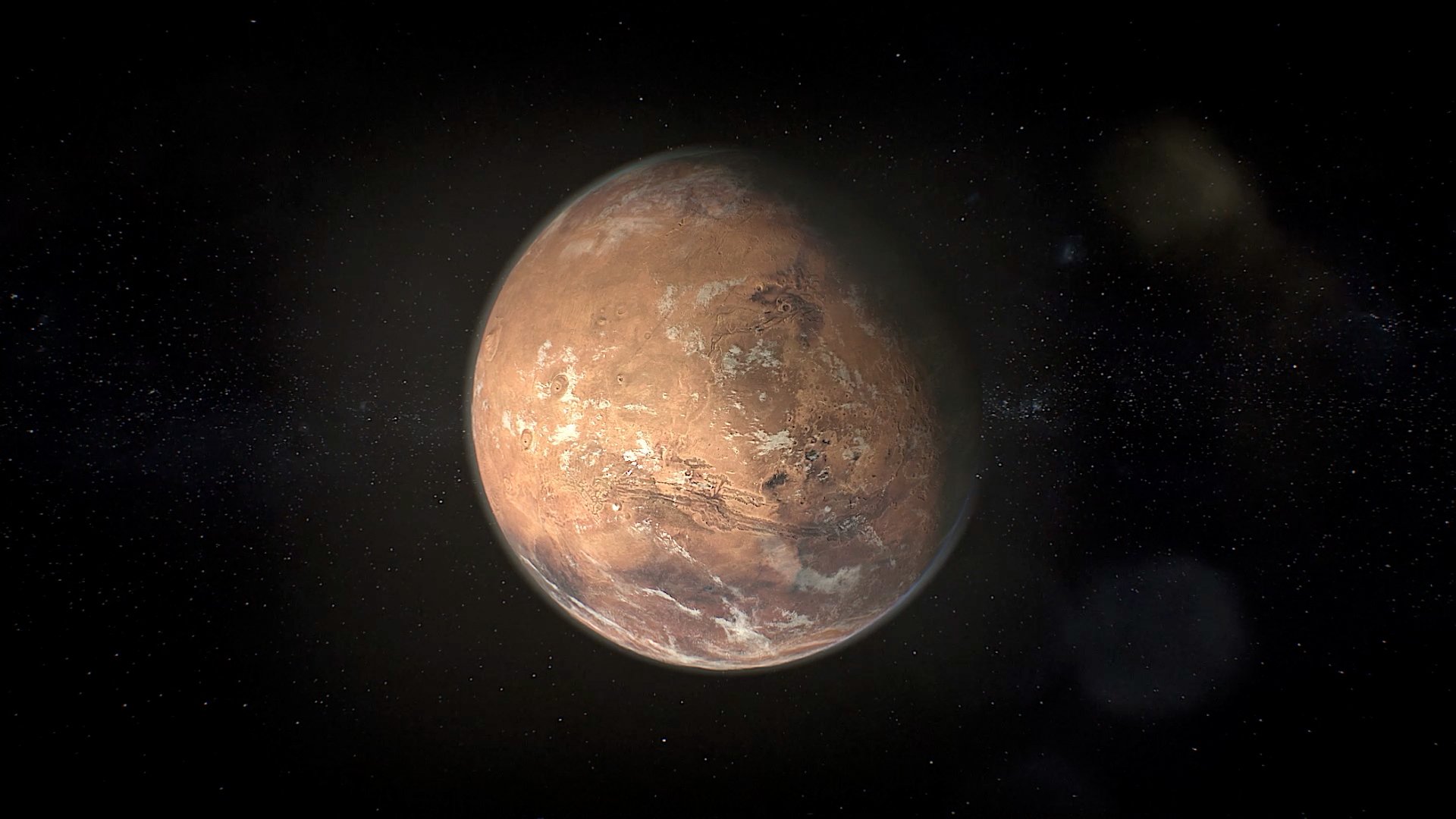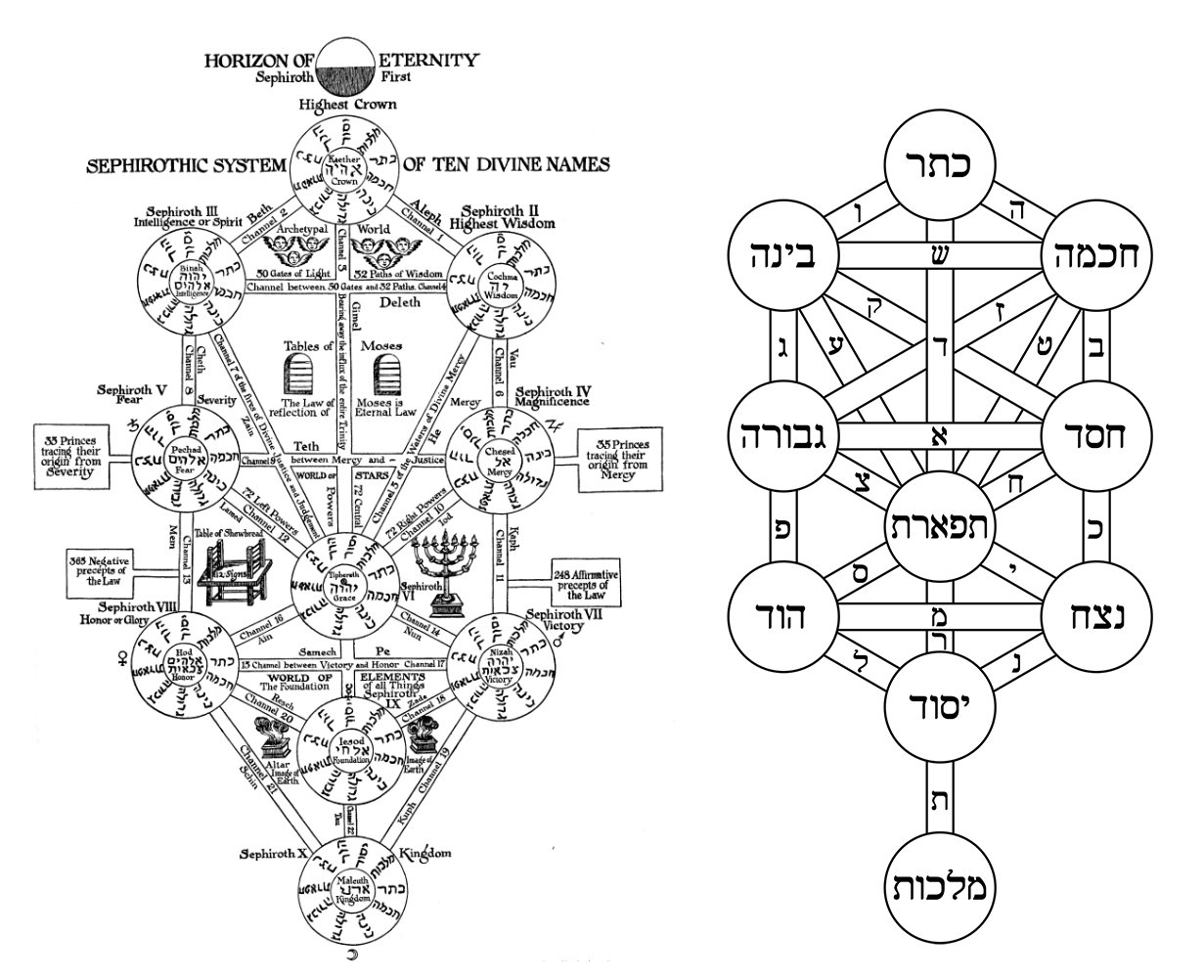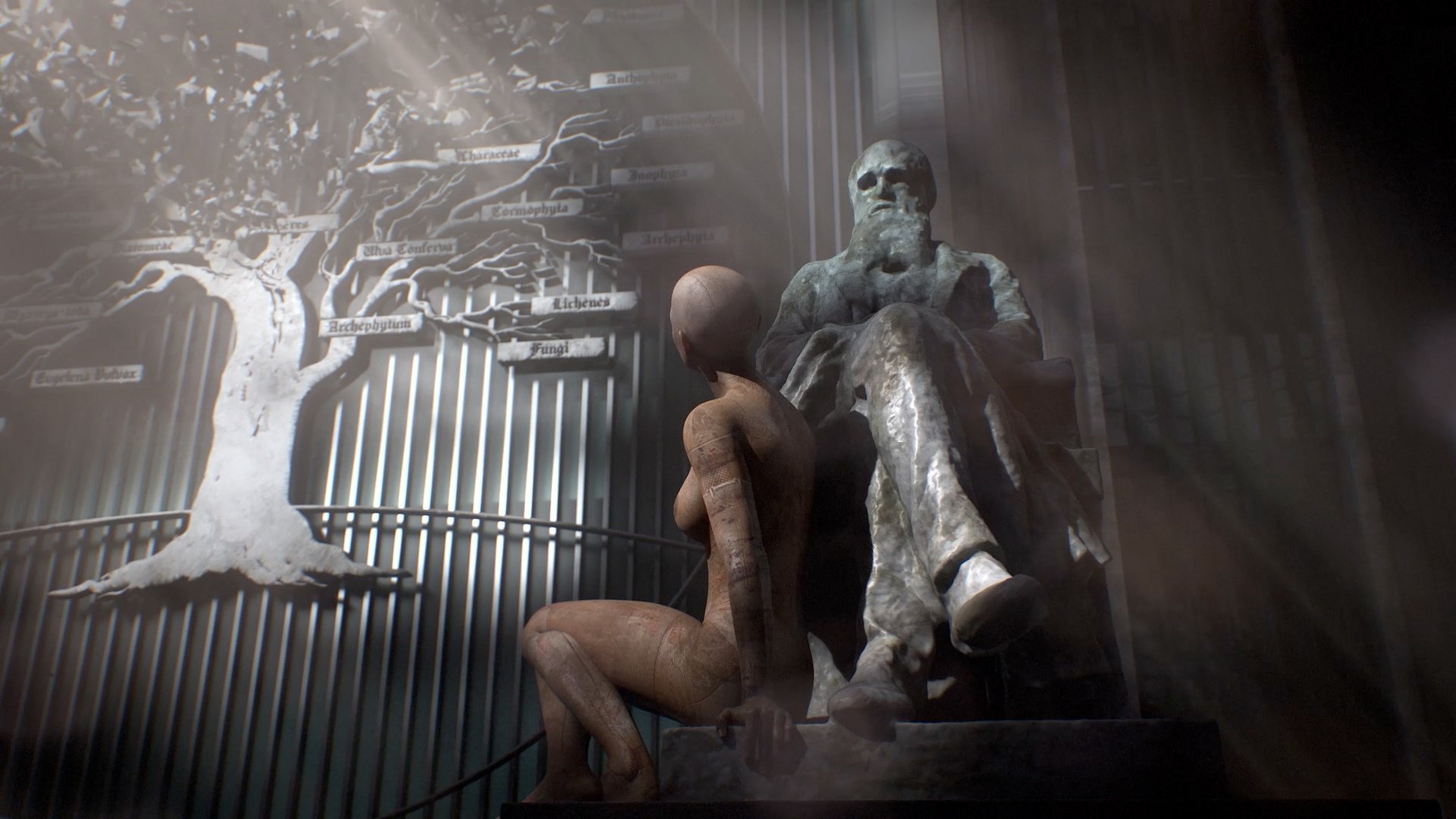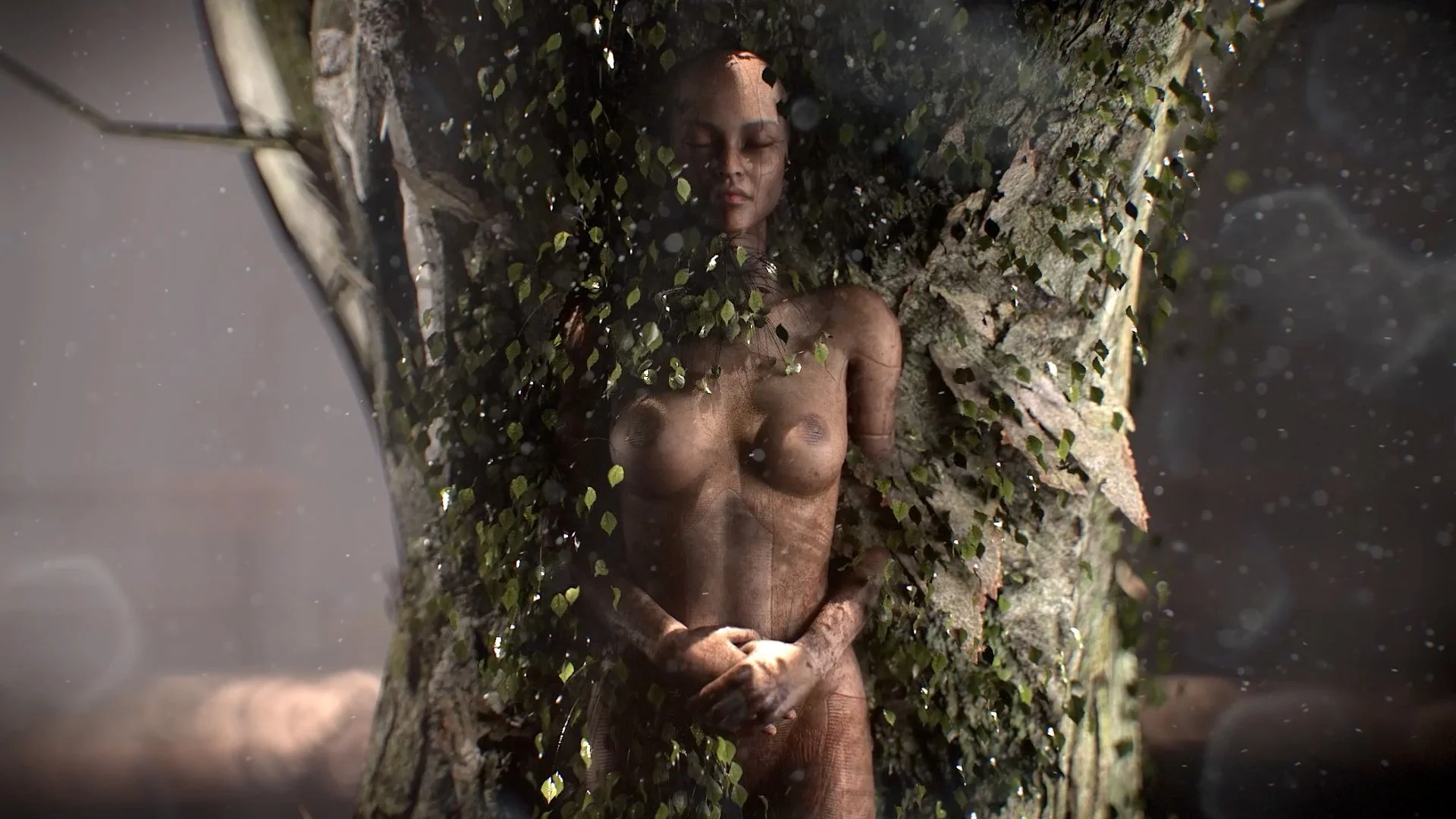
Immerse yourself in the intricate influences that shaped 'Red Gaia'
Influences from historic religious and philosophical manuscripts, significant artifacts, and timeless artworks are woven into our narrative fabric. Alongside these, we've drawn from modern science fiction and credible scientific foresight to construct the unique landscape of 'Red Gaia'. The symbolism and context infused within our story merit a detailed exploration. Continue reading to decode the layered meanings and reveal the depth of our cinematic universe.

CHAPTER LINKS:
1. THE COSMIC PROCESS - Considering the overarching theme of film.
2. LANGUAGES OF THE ANCIENTS - The android studies all human languages and cultures.
3. THE NEW, OLD WORLD - The film is set on the planet Mars, centuries in the future.
4. UNDERSTANDING THE PAST TO CHARTER THE FUTURE - The influence of human historical artefacts on the descendants.
5. MANKIND’S RECREATION OF SELF - The advent of artificial intelligence and cybernetic androids.
6. HARNESSING THE SPIRITUAL REALM - Chakras, life force and meditation.
7. THE ANXIETY OF SEPARATION FROM THE NATURAL WORLD - A mechanical being in service to organic precursors.
8. ANOTHER PILGRIMAGE BACK TO THE TEMPLE OF HUMANITY - The Android’s habitual journey to the Museum.
9. THE HUMAN SOCIETAL CONSTRUCT - Sociology of a future Martian civilization.
10. THE EVE OF RECKONING - The android beckons to the heavens when in a situation of distress.
11. SURRENDERING TO THE COSMIC PROCESS - The android comes to understand a core tenet of nature.
12. THE COSMIC PROCESS PERPETUATES - An end or a new beginning
1.
THE COSMIC PROCESS
Samsara - The cycle of death and rebirth to which life in the material world is bound.
Saṃsāra, a term drawn from Sanskrit and Pali languages, stands as a central belief in many Indian religions, encapsulating the concept of the world in its entirety. Interpreted in the context of 'Red Gaia,' Saṃsāra embodies the perpetual cycle of life, matter, and existence, ultimately leading to the notions of death and rebirth. This cyclicality bears great significance to our narrative, closely paralleling the journey of our protagonist, Venus. With the potential for a new life sprouting from the last living tree, Saṃsāra is embodied through the transformation of Venus, her actions, and the Martian world around her. More commonly, this term signifies the intricate interplay of transmigration, the karmic cycle, reincarnation, or Punarjanman, tying into the film's deeper themes and the android's quest for understanding her purpose and place in the cosmos.
The Dharmachakra, a term rooted in Sanskrit and Pali, translates to the 'wheel of dharma.' This symbol holds profound importance across several Indian religions, including Hinduism, Jainism, and particularly Buddhism. Within the context of 'Red Gaia,' the Dharmachakra, with its eight spokes, manifests the symbolism of the Noble Eightfold Path: Right View, Right Resolve, Right Speech, Right Actions, Right Occupation, Right Effort, Right Mindfulness, and Right Concentration. These guiding principles resonate with Venus's journey towards understanding her existence and making sense of the world around her. As she grapples with complex concepts of life, death, and rebirth, the Dharmachakra acts as a metaphorical compass, illuminating her path and guiding her actions in this new world.
2.
LANGUAGES OF THE ANCIENTS
Endowed with an advanced cognitive capacity, the android, Venus, can assimilate and retain an extensive compendium of human historical records. In her pursuit of understanding, she perceives the multifaceted tapestry of human cultures and languages as a unified entity and engages with them impartially. Throughout the course of 'Red Gaia,' Venus communicates through a medley of languages, including Tibetan, English, Sanskrit, and Hebrew, in a symphony of recitations and chants, bridging humanity's past and her own present.
Tibetan: The film opens with an asynchronous voice over, recited from the Tibetan book of the dead. The book is revealed atop a boulder, a place where the Android sits to contemplate or meditate.
English: English translations are interweaved with the Tibetan voice over to represent a fluid mental process between languages in the mind of the android.
The poem Purgatirio by Dante, originally written in Italian, is recited in English by the Android. The Android is seen reading from an antiquated copy of the text within the museum.
Sanskrit: Having studied ancient Sanskrit texts such as the Upanishads, Vedas and Bhagavad Gita, the android experiences auditory hallucinations of resonant verses. Towards the end of the film we overhear the Android subvocalizing a pivotal verse in the Bhagavat Gita.
Hebrew: The Kabbalah, written in Hebrew, is another ancient spiritual text studied by the Android. We hear a recollection of a Kabbalistic verse in the mind of the Android when she confronts the ornamental depiction of the biological tree of life within the inner museum.
3.
THE NEW, OLD WORLD
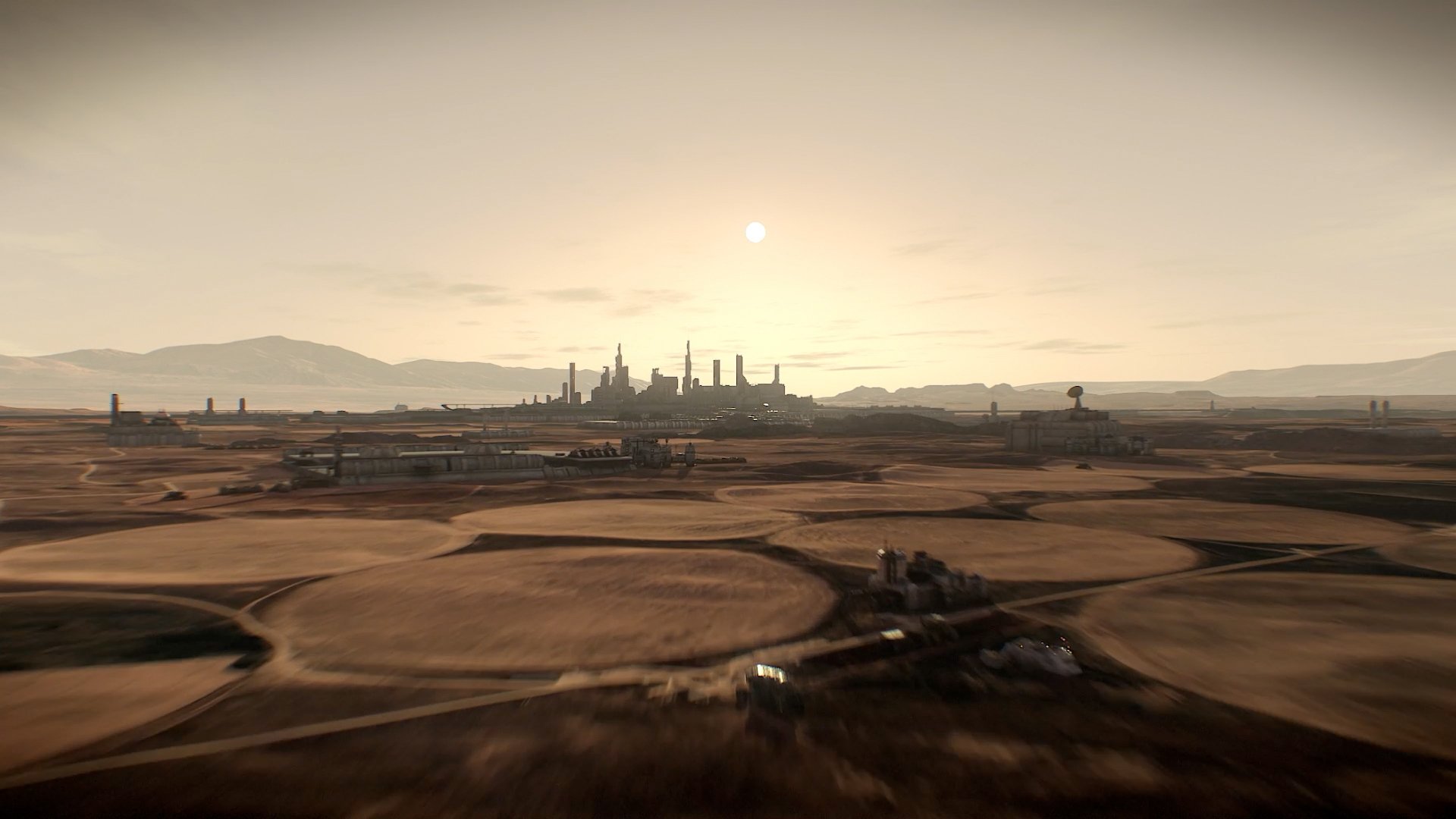
Planet Mars, Alpha City, circa 2300 CE
The story takes place on Mars, late in the 23rd century. Only the desolate ruins of the human civilization remain. Alpha City, the monolithic capital city, spanning primarily below ground, breaks the surface with its skyscraper-like structures. A homage to the once great megacities of earth.
“You want to wake up in the morning and think the future is going to be great - and that’s what being a spacefaring civilization is all about. It’s about believing in the future and thinking that the future will be better than the past. And I can’t think of anything more exciting than going out there and being among the stars.”
-Elon Musk
21ST CENTURY reasons for colonizing Mars included curiosity, the potential for humans to provide more in-depth observational research than unmanned rovers, economic interest in its resources, and the possibility that the settlement of other planets could decrease the likelihood of human extinction.
- 21st century rationale for Mars colonization: https://en.wikipedia.org/wiki/Colonization_of_Mars
A vast array of exhaust towers dominate a plateau region on the far outskirts of the capital city. These structures were designed to generate considerable quantities of gasses which work to alter the chemical composition of the Martian atmosphere. Sheltered within one of the towers, sits a fledgling tree growing out of a pile of collapsed rubble.
After many decades of wandering amongst the ruins of human civilization, the Android unexpectedly stumbled upon the tree, the only remnant of life apart from herself.
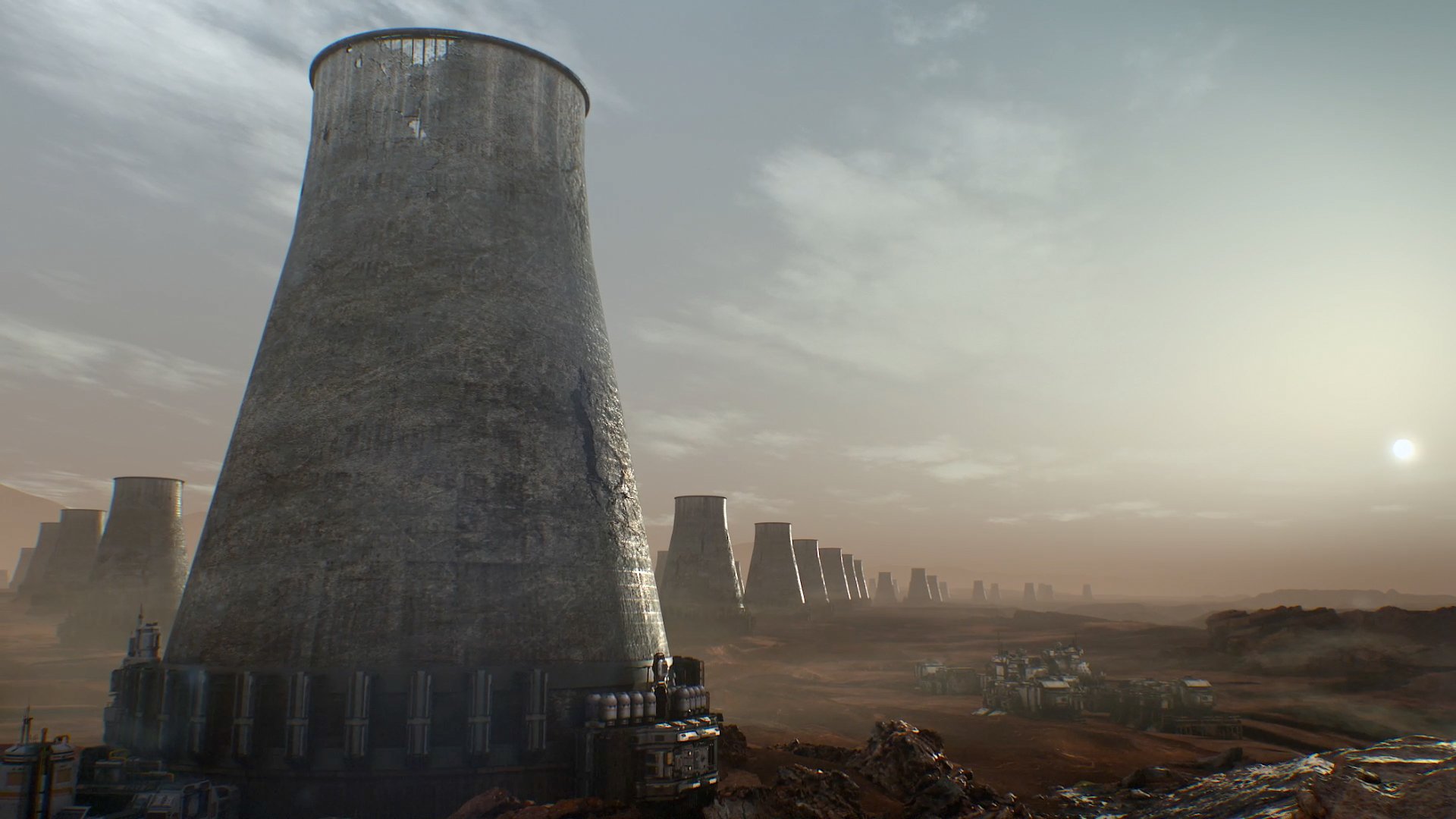
Terraforming the Red Planet
“For centuries, our reliance on industrial machinery, coal and fossil fuels has had a measurable effect on Earth’s environment. And whereas this has been an unintended consequence of modernization and development here on Earth; on Mars, the burning of fossil fuels and the regular release of pollution into the air would have a positive effect.”
Excerpt from 21st century speech, motivating the terraforming of Mars.
The terraforming of Mars is a hypothetical procedure that would consist of a planetary engineering project or concurrent projects, with the goal of transforming the planet from one hostile to terrestrial life to one that can sustainably host humans and other lifeforms free of protection or mediation. The process would presumably involve the rehabilitation of the planet's extant climate, atmosphere, and surface through a variety of resource-intensive initiatives, and the installation of a novel ecological system or systems.
Justifications for choosing Mars over other potential terraforming targets include the presence of water and a geological history that suggests it once harbored a dense atmosphere similar to Earth’s.
https://en.wikipedia.org/wiki/Terraforming_of_Mars
4.
UNDERSTANDING THE PAST TO CHARTER THE FUTURE
The monumental museum houses preeminent artefacts which preserve the cultural heritage of human civilization. The building, once the most cherished site of the human inhabitants, is ceremoniously located at the heart of the Martian city.
The rise and fall of civilizations:
From the collapse of ancient Rome to the fall of the Mayan empire, evidence from archaeology suggests that five factors have almost invariably been involved in the loss of civilizations: uncontrollable population movements; new epidemic diseases; failing states leading to increased warfare; collapse of trade routes leading to famine; and climate change. - World Economic Forum

Mask of Tutankhamun: For almost 30 centuries—from its unification around 3100 B.C. to its conquest by Alexander the Great in 332 B.C.—ancient Egypt was the preeminent civilization in the Mediterranean world.
The Moai are monolithic human figures carved by the Rapa Nui people on Easter Island in eastern Polynesia between the years 1250CE and 1500CE.
Archaeologists suggest that the statues were symbols of authority and power, both religious and political. But they were not only symbols. To the people who erected and used them, they were actual repositories of sacred spirit. Carved stone and wooden objects in ancient Polynesian religions, when properly fashioned and ritually prepared, were believed to be charged by a magical spiritual essence called mana.
Repositories of ancestral knowledge - A large collection of Influential documents from throughout the ages are preserved and displayed in the museum. The allure of the contents within the space resulted in countless visits by the Android. The writings are a marvel of human documented thought from which the Android forms her understanding of the spirit of the human condition.
The Android’s many decades of solitude on the red planet resulted in her thoroughly exploring the remaining vestiges of human civilization. The museum and the cherished artifacts contained within, patently became her primary source of fascination. In her seeming condemnation to a life of purgatory, seminal ancient spiritual texts and associated artefacts offered solace from the persistent sense of longing and bereavement.
The Bardo Thodol (also known as The Tibetan Book of the Dead)
The Tibetan text describes, and is intended to guide one through, the experiences that the consciousness has after death, in the bardo, the interval between death and the next rebirth. The text also includes chapters on the signs of death and rituals to undertake when death is closing in or has taken place. The text can be used as either an advanced practice for trained meditators or to support the uninitiated during the death experience.
Root Verses on the Six Bardos
Kyema! Now when the bardo of this life is dawning upon me,
I will abandon laziness for which life has no time,
Enter, undistracted, the path of study, reflection and meditation,
Making perceptions and mind the path, and realize the three kāyas;
Now that for once I have attained a human body,
This is not the time to remain in the ways of distraction.
Kyema! Now when the bardo of dreams is dawning upon me,
I will abandon the heedless, corpse-like sleep of ignorance,
And settle the mind in its natural state without distraction;
Recognizing dreams, I will train in transformation and clear light,
I must not simply slumber like an animal,
But combine sleep with realization—this is crucial.
Kyema! Now when the bardo of samādhi is dawning upon me,
I will abandon all forms of distraction and delusion,
And rest in the infinite state that is free of distraction and grasping;
Gaining stability in the two stages: generation and perfection,
At this time of single-pointed meditation, having given up activity,
I must not fall under the sway of afflictions and delusion.
Kyema! Now when the bardo of dying is dawning upon me,
I will abandon all grasping, yearning, and attachment,
Enter, undistracted, a state in which the instructions are clear,
And transfer my own awareness into the sphere of unborn space;
As I am about to leave this compound body of flesh and blood,
I will know it to be a transitory illusion.
ཀྱཻ་མ༔ བདག་ལ་སྐྱེ་གནས་བར་དོ་འཆར་དུས་འདིར༔
ཚེ་ལ་ལོངས་མེད་ལེ་ལོ་སྤངས་བྱས་ནས༔
ཐོས་བསམ་སྒོམ་གསུམ་མ་ཡེངས་ལམ་ལ་འཇུག༔
སྣང་སེམས་ལམ་བསློང་སྐུ་གསུམ་མངོན་གྱུར་བྱ༔
མི་ལུས་ལན་གཅིག་ཐོབ་པའི་དུས་ཚོད་འདིར༔
ཡེངས་མ་ལམ་ལ་སྡོད་པའི་དུས་ཚོད་མིན༔
ཀྱཻ་མ༔ བདག་ལ་རྨི་ལམ་བར་དོ་འཆར་དུས་འདིར༔
གཏི་མུག་རོ་ཉལ་བག་མེད་སྤངས་བྱས་ནས༔
དྲན་པ་ཡེངས་མེད་གནས་ལུགས་ངང་ལ་འཇོག༔
རྨི་ལམ་བཟུང་ནས་སྤྲུལ་བསྒྱུར་འོད་གསལ་སྦྱངས༔
དུད་འགྲོ་བཞིན་དུ་ཉལ་བར་མ་བྱེད་ཅིག༔
གཉིད་དང་མངོན་སུམ་འདྲེས་པའི་ཉམས་ལེན་གཅེས༔
ཀྱཻ་མ༔ བདག་ལ་བསམ་གཏན་བར་དོ་འཆར་དུས་འདིར༔
རྣམ་གཡེངས་འཁྲུལ་པའི་ཚོགས་རྣམས་སྤངས་བྱས་ནས༔
ཡེངས་མེད་འཛིན་མེད་མཐའ་བྲལ་ངང་ལ་འཇོག༔
བསྐྱེད་རྫོགས་གཉིས་ལ་བརྟན་པ་ཐོབ་པར་བྱ༔
བྱ་བ་སྤངས་ནས་རྩེ་གཅིག་བསྒོམ་དུས་འདིར༔
ཉོན་མོངས་འཁྲུལ་བའི་དབང་དུ་མ་བཏང་ཞིག༔
ཀྱཻ་མ༔ བདག་ལ་འཆི་ཁ་བར་དོ་འཆར་དུས་འདིར༔
ཀུན་ལ་ཆགས་སེམས་ཞེན་འཛིན་སྤངས་བྱས་ནས༔
གདམས་ངག་གསལ་བའི་ངང་ལ་མ་ཡེངས་འཇུག༔
རང་རིག་སྐྱེ་མེད་ནམ་མཁའི་དབྱིངས་སུ་འཕོ༔
འདུས་བྱས་ཤ་ཁྲག་ལུས་དང་བྲལ་ལ་ཁད༔
མི་རྟག་སྒྱུ་མ་ཡིན་པར་ཤེས་པར་བྱ༔
The Bhagavad Gita is a 700-verse Hindu scripture that is part of the epic Mahabharata, dated to the second half of the first millennium BCE and is typical of the Hindu synthesis. It is considered to be one of the holy scriptures for Hinduism. The mystical text that speaks about “the nature of things.” It speaks about humanity, reality, and our place in that reality, as well as the actions we are to take to find wisdom and happiness. It is an essential spiritual text because it establishes a person's right to question everything.
The Gita combines the concepts expressed in the central texts of Hinduism – the Vedas and Upanishads – which are here synthesized into a single, coherent vision of belief in one God and the underlying unity of all existence. The text instructs on how one must elevate the mind and soul to look beyond appearances – which fool one into believing in duality and multiplicity – and recognize these are illusions; all humans and aspects of existence are a unified extension of the Divine which one will recognize once the trappings of illusion have been discarded.
BG 3.3: The Blessed Lord said: O sinless one, the two paths leading to enlightenment were previously explained by me: the path of knowledge, for those inclined toward contemplation, and the path of work for those inclined toward action.
श्रीभगवानुवाच |
लोकेऽस्मिन्द्विविधा निष्ठा पुरा प्रोक्ता मयानघ |
ज्ञानयोगेन साङ्ख्यानां कर्मयोगेन योगिनाम्
BG 6.5: Elevate yourself through the power of your mind, and not degrade yourself, for the mind can be the friend and also the enemy of the self.
उद्धरेदात्मनात्मानं नात्मानमवसादयेत् |
आत्मैव ह्यात्मनो बन्धुरात्मैव रिपुरात्मन:
BG 6.10: Those who seek the state of Yog should reside in seclusion, constantly engaged in meditation with a controlled mind and body, getting rid of desires and possessions for enjoyment.
योगी युञ्जीत सततमात्मानं रहसि स्थित: |
एकाकी यतचित्तात्मा निराशीरपरिग्रह:
5.
MANKIND’S RE-CREATION OF SELF
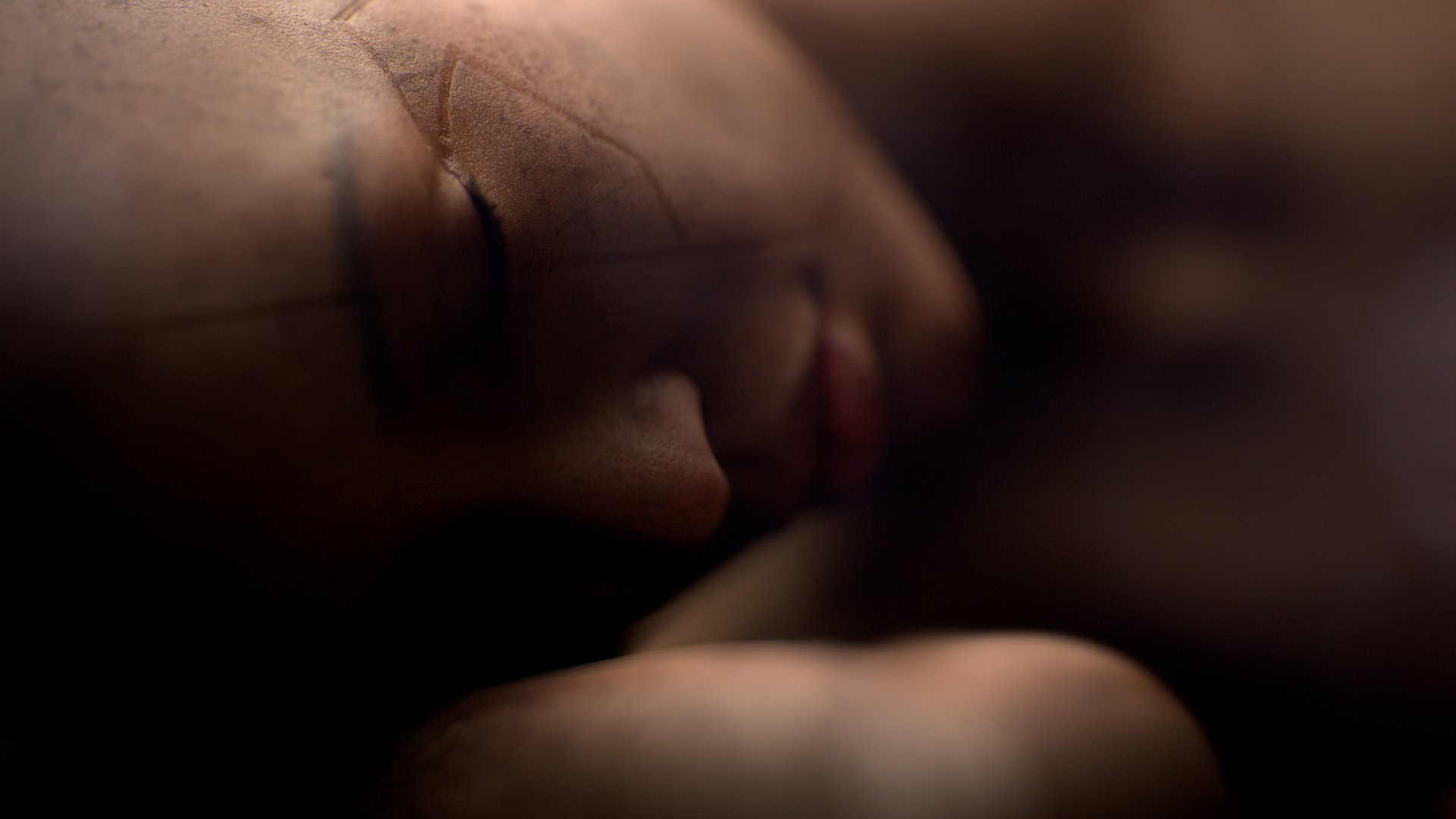
In the 23rd century, the last vestiges of humanity exist within a synthetic life form - a biomechanical android.
The most advanced androids are designed with a mixture of biological and synthetic processes. Human stem cells are used to grow their biological components. Their AI brains were derived from the cognitive structure of the human mind. In essence, humanity created synthetic life in their own image. These androids are intravenously nourished with bio-nanotech serums, tailored to their individual genetic signatures.
Synthetic biology (SynBio) is a multidisciplinary area of research that seeks to create new biological parts, devices, and systems, or to redesign systems that are already found in nature.
It is a branch of science that encompasses a broad range of methodologies from various disciplines, such as biotechnology, genetic engineering, molecular biology, molecular engineering, systems biology, membrane science, biophysics, chemical and biological engineering, electrical and computer engineering, control engineeringand evolutionary biology.
The rise of synthetic biology started in the early 21st century. Genomics entrepreneur Craig Venter created a synthetic cell that contains the smallest genome of any known, independent organism. Functioning with 473 genes, the cell is a milestone in his team's 20-year quest to reduce life to its bare essentials and, by extension, to design life from scratch.

THE LAWS OF A.I.
The Laws of Artificial Intelligence, also known as the Laws of Robotics are a set of rules devised by science fiction author Isaac Asimov. These laws rose to prominence as the advent artificial intelligence systems become a reality in the early 21st century.
“While it is too soon to set down sector-wide regulations for this nascent field, it is vital that careful scrutiny of the ethical, legal and societal dimensions of artificially intelligent systems begins now.” - House of Commons, Science and Technology Committee, Robotics and artificial intelligence, Fifth Report of Session 2016–17
Isaac Asimov “Robot series” - Late 20th century
First Law
A robot may not injure a human being or, through inaction, allow a human being to come to harm.
Second Law
A robot must obey the orders given it by human beings except where such orders would conflict with the First Law.
Third Law
A robot must protect its own existence as long as such protection does not conflict with the First or Second Law.
Zeroth Law
A robot may not harm humanity, or, by inaction, allow humanity to come to harm.
6.
HARNESSING THE SPIRITUAL REALM
Chakras (/ˈtʃʌk.rəz, ˈtʃæk-/ CHUK-rəz, CHAK-;[2] Sanskrit: चक्र, romanized: cakra, lit. 'wheel, circle'; Pali: cakka) are various focal points used in a variety of ancient meditation practices, collectively denominated as Tantra, or the esoteric or inner traditions of Hinduism.[3][4][5]
The concept is found in the early traditions of Hinduism.[6] Beliefs differ between the Indian religions, with many Buddhist texts consistently mentioning five chakras, while Hindu sources offer six or seven.[7][3][4] Early Sanskrit texts speak of them both as meditative visualizations combining flowers and mantras and as physical entities in the body.[7] Within kundalini yoga, the techniques of breath exercises, visualizations, mudras, bandhas, kriyas, and mantras are focused on manipulating the flow of subtle energy through chakras.
Yoga: A Hindu theistic philosophy teaching the suppression of all activity of body, mind, and will, in order that the self may realize its distinction from them and attain liberation through a system of physical postures, breathing techniques and meditation.
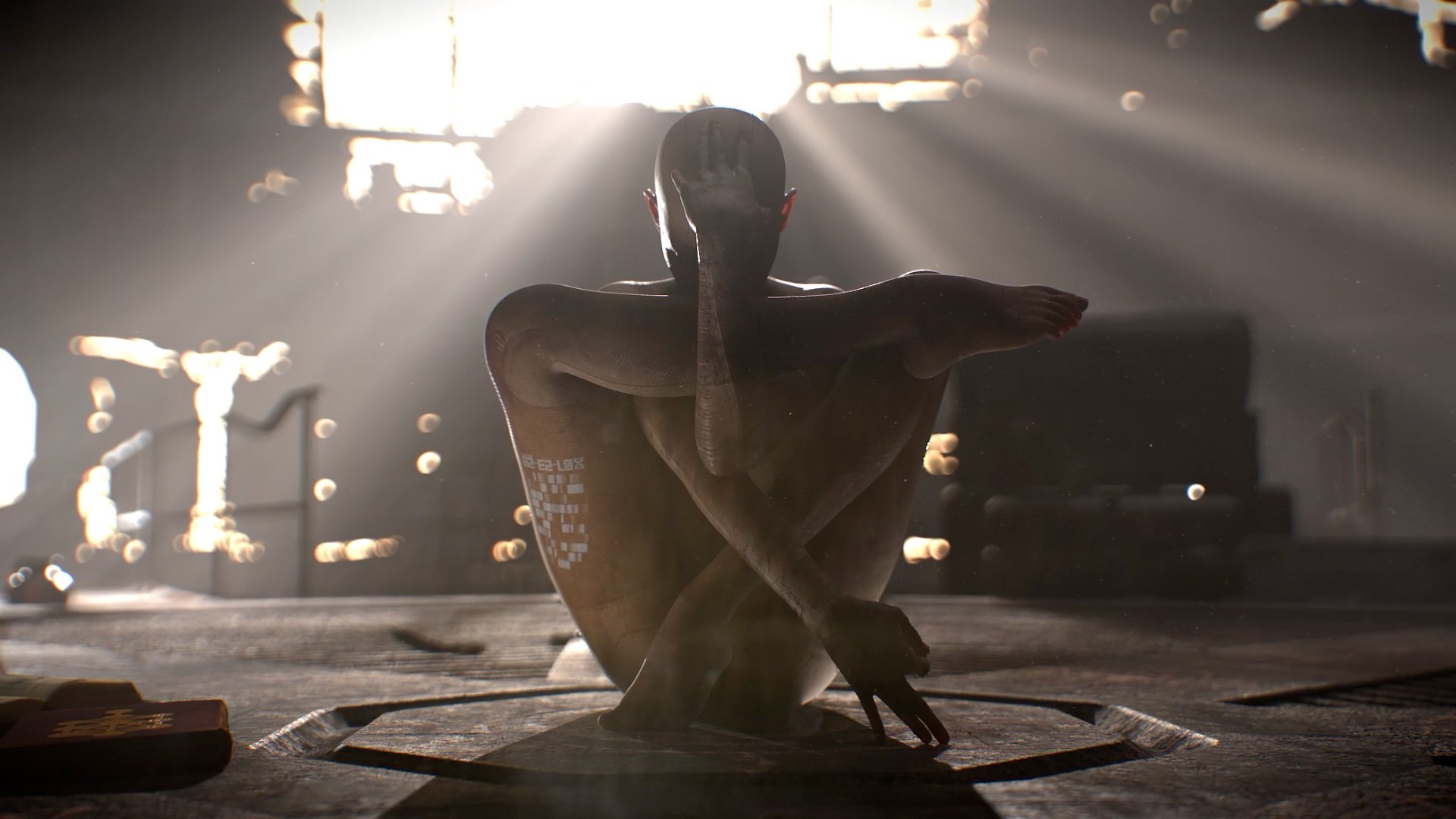
The fig tree became known as the bodhi tree because the Buddha reached enlightenment (bodhi) after meditating beneath one such tree for 49 days.
Meditation:
Buddhist meditation, the practice of mental concentration leading ultimately through a succession of stages to the final goal of spiritual freedom, nirvana. Meditation occupies a central place in Buddhism and, in its highest stages, combines the discipline of progressively increased introversion with the insight brought about by wisdom, or prajna.
Four stages, called (in Sanskrit) dhyanas or (in Pali) jhanas, are distinguished in the shift of attention from the outward sensory world: (1) detachment from the external world and a consciousness of joy and ease, (2) concentration, with suppression of reasoning and investigation, (3) the passing away of joy, with the sense of ease remaining, and (4) the passing away of ease also, bringing about a state of pure self-possession and equanimity.
7.
THE ANXIETY OF SEPARATION FROM THE NATURAL WORLD
The android nurtures the last remnant of complex earthly biology. The seed of the tree miraculously found a foothold and grew out of the rubble in the ruins of a terraforming exhaust tower. Now teetering on the edge of extinction, the tree, still harbors the potential to seed life on the barren world.
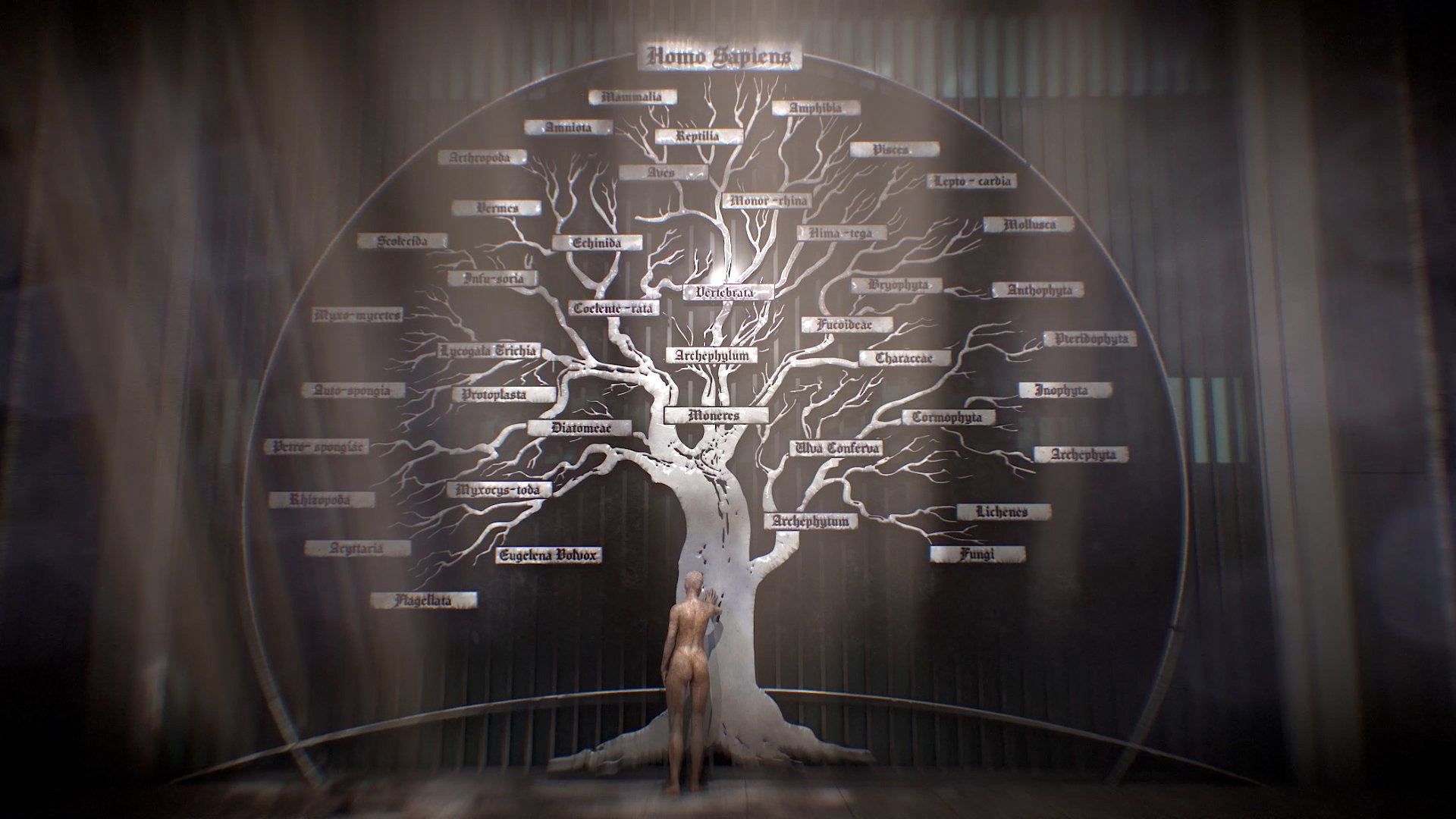
Tree of life (Biology)
The tree of life or universal tree of life is a metaphor, model and research tool used to explore the evolution of life and describe the relationships between organisms, both living and extinct, as described in a famous passage in Charles Darwin's On the Origin of Species (1859).[2]
“The affinities of all the beings of the same class have sometimes been represented by a great tree. I believe this simile largely speaks the truth.”
— Charles Darwin[3]
Tree of life (Kabbalah)
The Sefer Yetzirah is perhaps the oldest and most mysterious of all kabbalistic texts. The book explores the dynamics of the spiritual domain, the worlds of the sefirot, souls and angels. When properly understood the Sefer Yetzirah becomes an instruction manual for a very special type of meditation meant to strengthen concentration and to aid in the development of telekinetic and telepathic powers. Through the use of various signs, incantations, and divine names, initiates could also influence or alter natural events.
Sefer Yetzirah Gra Version: Chapter 1
5.
Ten Sephirot of Nothingness:/ Their measure is ten/ which have no end/ A depth of beginning/ A depth of end/ A depth of good/ A depth of evil/ A depth of above/ A depth of below/ A depth of east/ A depth of west/ A depth of north/ A depth of south/ The singular Master/ God faithful King/ dominates over them all/ from His holy dwelling/ until eternity of eternities.
עשר ספירות בלימה מדתן עשר שאין להם סוף עומק ראשית
ועומק אחרית עומק טוב ועומק רע עומק רום ועומק תחת עומק
מזרח ועומק מערב עומק צפון ועומק דרום אדון יחיד אל מלך נאמן
מושל בכולם ממעון קדשו עד עדי עד
7.
Ten Sephirot of Nothingness/ Their end is imbedded in their beginning/ and their beginning in their end/ like a flame in a burning coal/ For the Master is singular/ He has no second/ And before One, what do you count?
עשר ספירות בלימה נעוץ סופן בתחלתן ותחלתן בסופן כשלהבת
קשורה בגחלת שאדון יחיד ואין לו שני ולפני אחד מה אתה סופר
8.
ANOTHER PILGRIMAGE - BACK TO THE TEMPLE OF HUMANITY

Dante Alighieri - Purgatorio
Purgatorio is the second part of Dante's Divine Comedy, following the Inferno and preceding the Paradiso. The poem was written in the early 14th century.
Purgatory in the poem is depicted as a mountain in the Southern Hemisphere, consisting of a bottom section (Ante-Purgatory), seven levels of suffering and spiritual growth (associated with the seven deadly sins), and finally the Earthly Paradise at the top.
The poem outlines a theory that all sins arise from love – either perverted love directed towards others' harm, or deficient love, or the disordered or excessive love of good things.
To course across more kindly waters now
my talent’s little vessel lifts her sails,
leaving behind herself a sea so cruel;
and what I sing will be that second kingdom,
in which the human soul is cleansed of sin,
becoming worthy of ascent to Heaven.
But here, since I am yours, o holy Muses,
may this poem rise again from Hell’s dead realm;
and may Calliope rise somewhat here,
accompanying my singing with that music
whose power struck the poor Pierides
so forcefully that they despaired of pardon.
The gentle hue of oriental sapphire
in which the sky’s serenity was steeped—
its aspect pure as far as the horizon—
brought back my joy in seeing just as soon
as I had left behind the air of death
that had afflicted both my sight and breast.
The lovely planet that is patroness
of love made all the eastern heavens glad,
veiling the Pisces in the train she led.
Then I turned to the right, setting my mind
upon the other pole, and saw four stars
not seen before except by the first people.
Per correr miglior acque alza le vele
omai la navicella del mio ingegno,
che lascia dietro a sé mar sì crudele;
e canterò di quel secondo regno
dove l’umano spirito si purga
e di salire al ciel diventa degno.
Ma qui la morta poesì resurga,
o sante Muse, poi che vostro sono;
e qui Calïopè alquanto surga,
seguitando il mio canto con quel suono
di cui le Piche misere sentiro
lo colpo tal, che disperar perdono.
Dolce color d’orïental zaffiro,
che s’accoglieva nel sereno aspetto
del mezzo, puro infino al primo giro,
a li occhi miei ricominciò diletto,
tosto ch’io usci’ fuor de l’aura morta
che m’avea contristati li occhi e ’l petto.
Lo bel pianeto che d’amar conforta
faceva tutto rider l’orïente,
velando i Pesci ch’erano in sua scorta.
I’ mi volsi a man destra, e puosi mente
a l’altro polo, e vidi quattro stelle
non viste mai fuor ch’a la prima gente.
Hieronymus Bosch, The Garden of Earthly Delights (circa 1500 CE)
The painting depicts paradise with Adam and Eve and many wondrous animals on the left panel, the earthly delights with numerous nude figures and tremendous fruit and birds on the middle panel, and hell with depictions of fantastic punishments of the various types of sinners on the right panel. When the exterior panels are closed the viewer can see, painted in grisaille, God creating the Earth.
Scholars have proposed that Bosch used the outer panels to establish a Biblical setting for the inner elements of the work, and the exterior image is generally interpreted as set in an earlier time than those in the interior. As with Bosch's Haywain triptych, the inner centerpiece is flanked by heavenly and hellish imagery. The scenes depicted in the triptych are thought to follow a chronological order, flowing from left-to-right they represent respectively, Eden, the garden of earthly delights, and Hell. God appears as the creator of humanity in the left hand wing, while the consequences of his will are implied in the right.
Sandro Botticelli, The Birth of Venus (circa 1485 CE).
The painting depicts the goddess Venus arriving at the shore after her birth, when she had emerged from the sea fully-grown.
For Plato – Venus had two aspects: she was an earthly goddess who aroused humans to physical love or she was a heavenly goddess who inspired intellectual love in them. Plato further argued that contemplation of physical beauty allowed the mind to better understand spiritual beauty. So, looking at Venus, the most beautiful of goddesses, might at first raise a physical response in viewers which then lifted their minds towards the godly.[29] A Neoplatonic reading of Botticelli's Birth of Venus suggests that 15th-century viewers would have looked at the painting and felt their minds lifted to the realm of divine love.
When viewing the painting, the android contemplates her place in existential reality, recalling the laboratories in which she was birthed. The story behind the birth of Venus striking a metaphorical semblance to the android’s own creation.
The ouroboros is an ancient symbol of a snake or serpent eating its own tail
The ouroboros is often interpreted as a symbol for eternal cyclic renewal or a cycle of life, death, and rebirth. The skin-sloughing process of snakes symbolizes the transmigration of souls, the snake biting its own tail is a fertility symbol in some religions, and the tail of the snake is a phallic symbol, the mouth is a yonic or womb-like symbol.
Rodin – The Thinker
The sculpted figure represented Dante Alighieri, the early Italian Renaissance poet. Rodin depicted Dante reflecting on The Divine Comedy, his epic poem about heaven, hell, and the fate of all humankind. However, the sculpture ultimately came to symbolize everyone who utilizes their imagination to create: artists, writers, scientists, and many others.
The android confronting the reality of her separation. Even though born from the DNA of homo sapiens, the synthetic life form does not have a place on the depiction of the biological tree of life which sits as the centerpiece amongst mankind’s most cherished remnants.
Pietà - Michelangelo (1500 CE)
Pietà , meaning “Pity” or “Compassion,” depicts the body of Jesus on the lap of his mother Mary after the Crucifixion.
Contrary to being a work of mourning or devastation at the death of Jesus, Mary exhibits rather a serene scene of tranquility and graceful acceptance. Though Jesus’ head is thrown back in the helplessness of human death, Mary recognizes the originality of life.
This is such a profound statement of the Renaissance on the death of Jesus that is actually a foundation to eternal life.
-The Vatican
9.
THE HUMAN SOCIETAL CONSTRUCT
The human inhabitants on Mars retained an affinity for the earthly cultural identity. Replicas of seminal cultural artefacts as well as valuable novelty items from the bygone earthbound era were collected and admired by the humans. Ostensibly in an attempt to symbolically hold on to vestiges of the life once lived by their ancestors. Although highly technologically advanced the descendant generations of Martian settlers required a set of societal laws to safeguard the future survival of the civilization.
The Georgia Guidestones - a granite monument erected in 1980 in Elbert in the south eastern United States.
A message consisting of a set of ten guidelines or principles is engraved on the Georgia Guidestones in eight different languages, one language on each face of the four large upright stones. Moving clockwise around the structure from due north, these languages are: English, Spanish, Swahili, Hindi, Hebrew, Arabic, Traditional Chinese, and Russian.
The stones were built in 1979 at the height of the Cold War, they may have been intended as a message to the possible survivors of a nuclear World War III. One interpretation of the stones is that they describe the basic concepts required to rebuild a devastated civilization.
Maintain humanity under 500,000,000 in perpetual balance with nature.
Guide reproduction wisely—improving fitness and diversity.
Unite humanity with a living new language.
Rule passion—faith—tradition—and all things with tempered reason.
Protect people and nations with fair laws and just courts.
Let all nations rule internally resolving external disputes in a world court.
Avoid petty laws and useless officials.
Balance personal rights with social duties.
Prize truth—beauty—love—seeking harmony with the infinite.
Be not a cancer on the Earth—Leave room for nature—Leave room for nature.
10.
THE EVE OF RECKONING
A massive dust storm, a natural hazard on Mars, blankets the vicinity of the city and threatens the existence of the tree harbored in the emission tower.
Psalm 20 - The Complete Jewish Bible
May Adonai answer you in times of distress,
may the name of the God of Yahweh protect you.
May he send you help from the sanctuary
and give you support from Tziyon.
“It is one of the most stirring of the Psalms, by its tense awareness of life-and-death issues soon to be resolved.” (Kidner)
The prayer that God would strengthen you out of Zion is fitting for more than the field of battle. It is also appropriate for the church pulpit, which is a field of battle in a spiritual sense. “This verse is a benediction befitting a Sabbath morning, and may be the salutation either of a pastor to his people, or of a church to its minister.” (Spurgeon)
11.
SURRENDERING TO THE COSMIC PROCESS

BG 2.51: The wise endowed with equanimity of intellect, abandon attachment to the fruits of actions, which bind one to the cycle of life and death. By working in such consciousness, they attain the state beyond all suffering.
कर्मजं बुद्धियुक्ता हि फलं त्यक्त्वा मनीषिण: |
जन्मबन्धविनिर्मुक्ता: पदं गच्छन्त्यनामयम्
Nataraja is a depiction of the Hindu god Shiva as the divine cosmic dancer
He dances within a circular or cyclically closed arch of flames (prabha mandala), which symbolically represent the cosmic fire that in Hindu cosmology creates everything and consumes everything, in cyclic existence or cycle of life
He looks calm, even through the continuous chain of creation and destruction that maintains the universe, that shows the supreme tranquility of the Atma.
The android breaks from the laws bestowed upon her, with faith that the greater cosmic process will perpetuate.
As death approaches, the android feels that she has achieved synthesis with nature, sitting at the foot of Darwin and being embraced by the tree of life.
12.
THE COSMIC PROCESS PERPETUATES
1. All things come to be from their opposite states: for example, something that comes to be “larger” must necessarily have been “smaller” before.
2. Between every pair of opposite states there are two opposite processes: for example, between the pair “smaller” and “larger” there are the processes “increase” and “decrease”.
3. If the two opposite processes did not balance each other out, everything would eventually be in the same state: for example, if increase did not balance out decrease, everything would keep becoming smaller and smaller.
4. Since “being alive” and “being dead” are opposite states, and “dying” and “coming-to-life” are the two opposite processes between these states, coming-to-life must balance out dying.
5. Therefore, everything that dies must come back to life again.
-Plato (Phaedo)

